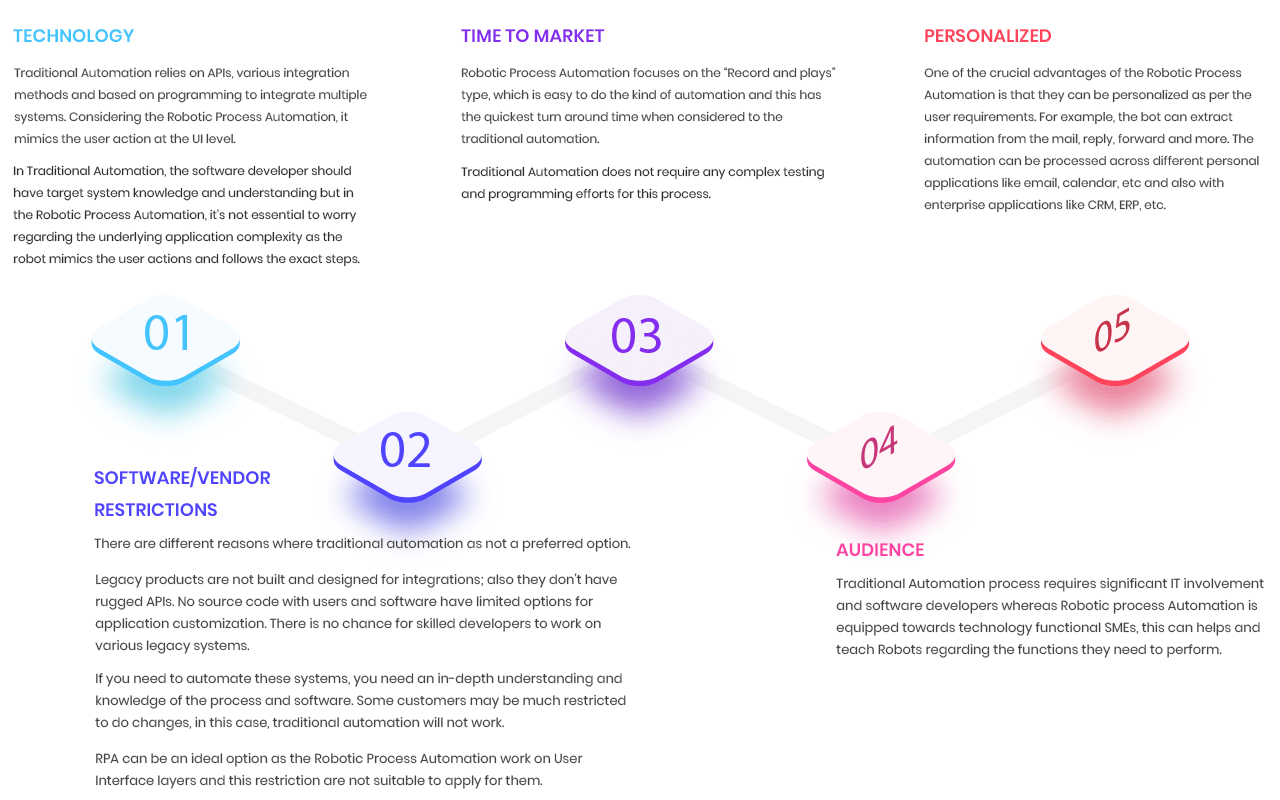
What is the difference between RPA and traditional automation? (Infographic)
Process automation has been the superhero to the industries for a long time. IT automation has seen tremendous growth in the industrial sector in the past decade. It has driven to magnified efficiency, compliance maintenance, reduced risks, and improved profitability. As technology has made giant strides, RPA (Robotic Process Automation) has come up and instantly become the new approach to automate business processes, while replacing the traditional automation.
Robotic Process Automation is a unique approach that automates different business processes. Both Robotic Process Automation and Traditional Automation strive to influences all software process and system together to automate the various business process.
Forrester Research anticipates that the RPA (Robotic Process Automation) market will extend to $2.9 billion by 2021, it was $250 million in 2016. That is an ample surge for a technology. RPA is a developing technology whose complete ability goes unrealized by most of the people.
We have compared the RPA and Traditional Automation with respect to different parameters. Here is a detailed infographic that showcases the differences between the Robotic Process Automation and Traditional Automation.
Hope the above infographics has helped you identify the difference between Robotic Process Automation and Traditional Automation. Any other differences that we have missed out? Let us know in the comment section below.

